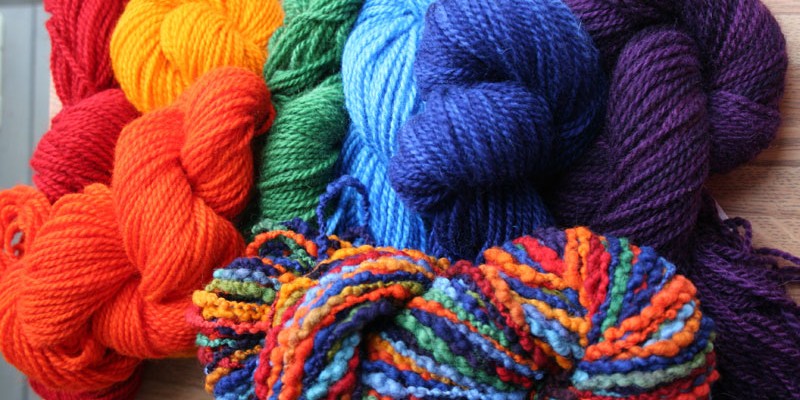
One of the most profound things I learned in school was during my 8th grade Physical Science class and it has remained with me over the years. The
Law of Conservation of Mass states (very roughly) that in a closed system, the mass of that system will remain constant over time. The implication of this law is that matter can neither be created nor destroyed. It is simply reordered through a series of chemical reactions.
At a practical level this has huge implications. In the natural world, trees lose their leaves every year and those leaves enrich the soil for other plants. Plants turn energy and nutrients into plants, small animals eat the plants and turn them into energy, waste (which enriches the soil) and animal. Predators eat the small animals and turn them into energy, waste (again, enriching the soil) and predator. When the predators die, bacteria decompose the body and turn it back into free energy and its component parts again making it available for the plants. It's a brutal, yet elegant system. There is no waste. Everything is recycled and becomes nutrients for something else.
Consider this... If I bag all my grass clippings and take them to the dump, I am removing matter from my property and placing it in a landfill where it will eventually decompose, creating waste greenhouse gasses and leftovers. If I rake up and burn my leaves every fall I am using a chemical reaction to oxidize the leaves. The components of those leaves are not gone. The ashes represent what remains of the leaves on my property but the bulk of them were changed into hot gasses that were released into the atmosphere. In both cases, I am removing potentially useful matter from my property and creating waste rather than using it for my benefit. Likewise, when I drive my car to take the grass clippings to the dump, I am using the gasoline to produce energy to move my car by burning it. The gasoline is not gone, though. It is simply changed into heat and energy with the by products released into the atmosphere though the tail pipe in the form of waste gasses and water vapor.
Barry Commoner, a prominent biologist, ecologist author and former presidential candidate who passed away in 2012, wrote the book,
The Closing Circle. In this book he draws on the Law of Conservation of Mass when he set forth his
four laws of ecology. They are:
1. Everything is connected to everything else. There is one ecosphere for all living organisms and what affects one, affects all.
2. Everything must go somewhere. There is no "waste" in nature and there is no "away" to which things can be thrown.
3. Nature knows best. Humankind has fashioned technology to improve upon nature, but such change in a natural system is likely to be detrimental to that system"
4. There is no such thing as a free lunch. Exploitation of nature will inevitably involve the conversion of resources from useful to useless forms.
Commoner's four laws are so obvious, yet so easy to overlook that it's scary. We are all interconnected - in so many ways. This is not just a World of nations, We are a planet of people and other species with a shared future. Landfill space is becoming scarce and nobody wants one in their back yard. We have developed farming methods that deplete and poison the soil for the microorganisms that live in it while the run off is polluting our rivers and oceans.
Finally, Law #4 is probably the most profound to me. We continue to use our resources faster than they can be replenished. We burn them, use them, break them down into their component parts, mix them together so their not recyclable and then throw them into the landfill where they sit forever, never to be seen again. One day those resources will be gone.
One of the best things we can do for our planet and everyone/thing on it is work to eliminate waste and/or harness it to our benefit. That's where the three R's come into play.
Reduce - Cut back on the stuff we use. Reduce trash, reduce stuff, reduce size, cut waste, or find more efficient ways of doing things.
Reuse - Find other purposes for things that are no longer needed or wanted OR find someone who wants it when you're done rather than sending it to the landfill
Recycle - Cut the amount of resources that go into a dump never to be seen again. Recycle waste food into useable food for other things and compost. Maximize your recycling program at home and work.
These are some of the things that drive our thinking here at Red Clay Farm. We try to find ways of keeping our organic material here on the farm and using it to our benefit rather than sending it to decompose in the landfill. We also work to reduce our waste as much as possible. Here are some of the ways we do that.
Animal Manure - This is composed of grass from our pastures, hay and feed that we have brought in to our farm. It is gathered routinely and composed with straw, leaves or grass clippings. We use it to spread back on the fields to enrich our soils. This way, we get more benefit from the money we spend on hay and feed. Not only does it go to keep the animals alive, but what is not useful to the animals is useful to the grass, and the microorganisms living in the soil.
Left-over human food - We make every effort to not send food scraps to the dump as well. vegetable matter gets put in the compost pile. Meats, fats and other non-compostable items get fed to our Black Soldier Fly Larvae (more on these in a later post). These guys make short work of any table scraps and, in turn, provide a tasty supplement to our chickens and, eventually, our aquaponics fish (our vegetarian tilapia don't like them). In this way we are turning our food scraps into chickens and eggs.
Paper, cardboard, etc - These items are shredded and used for various things such as worm bedding, chicken coop bedding and composting. We use broken-down cardboard boxes for sheet composting in the garden.
Recyclables - Our county recycles plastics, aluminum and glass so we make sure we support these programs.
Water - We live on a gentle slope that starts at the top of the property and runs towards the back of the property toward a creek. The contour of the property naturally channels rain water down the middle of the property. We are now developing a plan to try to stem the flow of water off of our property and keep as much of it as we can. Additionally, we are installing rain barrels at the gutter down spouts to keep that water as well.
Usable stuff - Items that we no longer want or need are donated to the local
Habitat for Humanity Re-Store and to
Goodwill.
We still have a long way to go, but we've started. Anything that we can use to enhance or enrich our farm stays on the farm. Anything that can be recycled in some way or another is. In this way we have greatly reduced the amount of trash we send to the land fill.
Hopefully this is not too long and manifesto-sounding. The long and the short of it is we can't just throw things away because there really isn't an "away" these days. All we need are a basic understanding of the natural laws of the world, some integrated solutions based on that understanding, and a willingness to make the changes in our lifestyle to implement those solutions and we can begin to make huge changes in the way we affect the Earth.


















.JPG)

.JPG)
.JPG)











